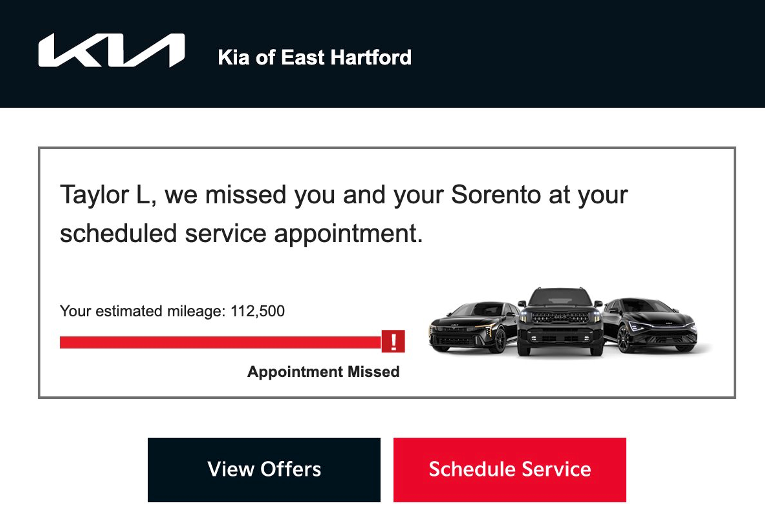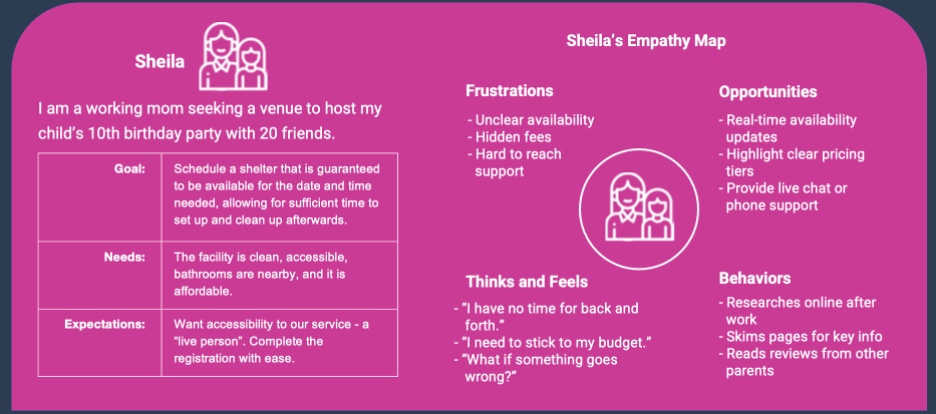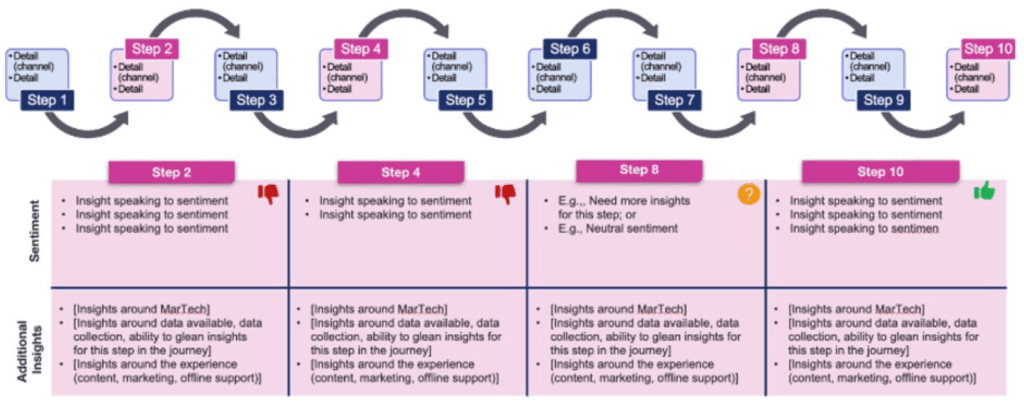How one broken customer journey exposed the gap between execution and reality—and why true CX starts with understanding your customer.
It was Maya Angelou who said:
People will forget what you said, people will forget what you did, but people will never forget how you made them feel.
This quote has stayed with me for years, and it should stay with every organization. Why? Because at its core, customer experience (CX) is about emotion. Every interaction shapes how customers feel about your brand. When that feeling isn’t intentional, even small missteps can weaken trust. It’s something I learned firsthand when Kia reached out to me.
Exceptional Customer Experiences Only Work When Exceptionally Executed
I recently received a recall notice from Kia. So I:
- Scheduled the service (piece of cake).
- Brought the car in for a recall service and decided to wait for it (easy fix, right?)

So far everything worked. Until it didn’t. 90 minutes later the technician explains there were two possible parts for the recall repair. They didn’t know which they needed until they inspected the car. Unfortunately they only had one of the parts in stock. Mine needed the other one.

They might have shared those details before I spent 90 minutes doing work with my laptop in a waiting room. Nonetheless, they said they’d contact me when the part arrived.
The next day I get an email chiding me for a missed appointment and encouraging me to reschedule. Two problems here:
- I did not miss my appointment, and
- How am I supposed to reschedule when they don’t have the part needed.

Kia had every bit of information it needed (contact information, appointment record, service inspection, etc.) to create a great experience; yet I was left inconvenienced, a bit annoyed, and driving a Kia with a recall that still wasn’t fixed.
Unfortunately, this type of breakdown is quite common. Many organizations, even those with sophisticated data systems, fail to connect strategy to execution. That gap is where customer experience begins to fail.
Great CX is not just about having the right strategy. It’s about executing a connected experience in a way that consistently reflects your customer’s reality. Great CX demands customer-centric execution.
In this two-part series, we’ll explore the core components of a customer-centric experience and how to execute each one effectively. In Part 1, we focus on the foundation: understanding your customer.
Think Like Your Customer to Improve CX
When strategy fails to meet execution, the gap often begins with perspective. The next step toward improving customer experience is shifting how your organization thinks. To deliver meaningful CX, you must see your brand through the customer’s eyes and design every interaction and system around their needs, not your internal processes. Four distinct motions can help you build this perspective:
- Persona(s) Creation
- Customer Journey Mapping
- Customer-Centric Data (ZPD and VoC) Acquisition
- Unified Customer Perspective
Each motion offers a different way to understand your customers’ experiences and emotions. When used together, they reveal where your CX succeeds, where it falls short, and how to close the gap between what you plan and what customers actually feel. Let’s dig a bit deeper into each area.
1. Create Customer Experience Personas That Go Beyond Demographics
I bought my Kia from this dealership. They had all my records. They also sell tons of Kias to people like me. I’m a professional, a parent, and a spouse. Does that sound like a busy person? You bet! They had the ability to know and assume things about me, but in this instance, it was nothing more than a systems transaction.
A great customer experience (CX) meant they needed to go beyond simple demographics. That’s because effective customer personas help you step into the mindset of your customers and design experiences that meet real needs. When building personas, think in terms of both typical and atypical, yet realistic, users who interact with your brand.
Each Persona should include:
- Background and context
- Goals
- Needs
- Expectations
To ensure your personas drive better CX execution:
- Keep them current. Establish a regular cadence to review and refine personas. Retire outdated ones and create new versions that reflect shifting priorities, customer segments, or market changes.
- Use them consistently. Personas should not live in a slide deck. Integrate them across the development lifecycle—from journey design and content planning to analytics interpretation.
- Apply empathy. Ask practical questions such as, What would this experience feel like for Taylor, mid-30s, deeply involved with her career and family?
Pro tip: Consider visualizing personas with empathy maps to illustrate goals, frustrations, and behaviors.

2. Map the Customer Journey to Improve CX Execution
Customer journey maps provide a clear, visual view of how customers interact with your brand—from the first touchpoint to the last. If Kia had done a journey map and used it for me, they would have known to tell me upfront this might take more time or require another appointment, instead of making me wait for 90 minutes.
When done well, journey maps reveal not only what customers do but also how they feel at each stage of the experience.
To make your customer journey maps truly actionable:
- Highlight moments that matter (MTMs). Identify the interactions that have the greatest impact on how customers perceive your brand.
- Pinpoint friction. Be honest about where customers struggle or drop off. Acknowledging these pain points is the first step toward improvement.
- Capture sentiment. Document emotional highs and lows throughout the journey to better understand how your brand makes customers feel.
- Add context. Include supporting data or insights that help explain why customers act the way they do.
- Update regularly. New products, service models, or digital channels introduce new paths that must be mapped and monitored.

Pro Tip: Assign internal ownership to each touchpoint so it is clear who is accountable for improving that part of the experience.
3. Gather Customer-Centric Data to Strengthen CX Insights
Even the best customer experience frameworks need the right data to validate decisions and personalize interactions. First-party data provides a strong foundation, but it only tells part of the story. To truly understand intent and preference, organizations must pair it with zero-party data and insights from Voice of the Customer (VoC) programs. Think of zero-party data as the details (I tell Kia I prefer the three-blade, high-end wipers) and VoC data as the sentiment (I think your intermittent wiper patterns could be better.)
Let’s look at both of these in a bit more detail.
Zero-Party Data: Just Ask
Zero-party data is information that customers willingly and proactively share with your organization—details about their preferences, needs, and intentions. Unlike behavioral data, it comes directly from the source, creating a foundation of trust and transparency.
Best practices for using zero-party data effectively:
- Embed collection naturally. Ask for preferences during onboarding, loyalty program sign-ups, or within account settings. The process should enhance the experience, not interrupt it.
- Combine with first-party data. Blend declared intent (zero-party) with observed behavior (first-party) to deliver personalized, relevant, and trustworthy experiences.
Zero-party data, when used correctly, opens up a wealth of opportunity to build exceptional, permission-based digital experiences. One note here: when you open this floodgate, you need to make sure you actually use it.
Voice of the Customer: Building Continuous Feedback into CX Strategy
A Voice of the Customer (VoC) program enables organizations to truly listen to their customers. Feedback from surveys, interviews, chat logs, and support transcripts provides qualitative insights at scale. When decisions are grounded in authentic customer voices, teams can better prioritize the enhancements that matter most and design experiences that feel relevant, helpful, and human. If Kia had garnered and used this type of data, I would not have been stuck at the dealer for 90 minutes.

To make your VoC program successful:
- Define clear goals. Do not collect feedback just to check a box. Identify what decisions the data will inform and how it connects to your broader CX strategy.
- Keep listening continuous. Customer experience evolves constantly. Treat VoC as an ongoing practice, not a quarterly survey.
- Close the loop. Share insights with relevant teams and act on them. When customers see their feedback implemented, trust and loyalty grow.
Zero-party data and Voice of the Customer programs are long-tail strategies that promise greater returns if you’re persistent in their pursuit, shy away from being intrusive, and actually use what you find to create an exceptional, customer-centric experience.
4. A Unified Customer Perspective Turns Data & Insights into Impact
In a perfect world my experience with the Kia recall goes something like this:
- Kia sends me the recall notice and lets me know it may require two appointments
- I schedule my appointment where I am again reminded it might take me coming back again to get this resolved
- Kia notifies me the part is in stock and gives me a ‘click to schedule’ button to schedule another (second) appointment
- My Kia is fixed
- I have a great experience that impressed me.
To create this perfect world, Kia needed to have a unified customer data framework that is integrated across all relevant systems. Without it (or using it incorrectly) they crossed signals and fractured the confidence and trust I previously had. Used correctly, Kia would have tailored my journey and ensured symmetry across this journey. This is not easy to do as it takes diligence in:
- Unified Data: “Unified data is data combined from different systems, platforms, or applications into one unified platform or view.”
- Data Cleansing: “The process of fixing or removing incorrect, corrupted, incorrectly formatted, duplicate, or incomplete data within a dataset.”
- Data Governance: “A principled approach to managing data during its life cycle, from acquisition to use to disposal.”
By taking a unified customer perspective with proper data and journey orchestration, they could have made this a positive rather than a negative encounter. This is an essential part of a customer-centric approach to experiences. Without it, missteps and mishaps can hamper your CX efforts and keep you from building the type of trusted relationship every leading brand wants; one that is grounded in trust and loyalty. The outcome is customers who buy more, stick with you, and are not easily lured to another brand.

Foundation Principles of Strong Customer Experience (CX) Execution
If you want to put the “C” in CX, begin by walking in your customers’ shoes. Every effective customer experience endeavor starts with empathy and understanding, supported by data that validates decisions and reveals opportunities to improve.
Use this checklist to keep your CX execution grounded in real customer insight:
- Keep customer personas fresh and actionable
- Map customer journeys and spotlight ways to reduce or remove friction
- Collect and apply zero-party data and Voice of the Customer (VoC) data for a richer view of customer needs and perspectives
- Take a unified customer perspective when optimizing your data and systems
When organizations combine empathy with structured execution, CX becomes more than a strategy—it becomes a shared mindset that drives loyalty, trust, and growth.
Ready to Level Up Your Customer Experience (CX) Execution?
Don’t fail your customers like Kia did in this instance. Building a strong CX foundation starts with understanding your customers. Then turn insight into coordinated action across your organization.
BlastX Consulting helps leading companies bridge the gap between customer insight and meaningful execution. Our customer experience consulting experts partner with your team to design digital experiences that build trust, loyalty, and measurable business impact.
Ready to strengthen your CX execution?
Let’s talk about how BlastX Consulting can help you transform CX strategy into real results.
More “Putting the ‘Customer’ Back into CX” is Coming Soon
In Part 2 of this series, we’ll explore how to align cross-functional teams, so your customer experience initiatives move beyond the slide deck and into action. You’ll learn practical ways to connect people, processes, and data to create a culture that consistently delivers on your CX promise.
Connect with me on LinkedIn if you’d like to be notified when the next insight drops.

